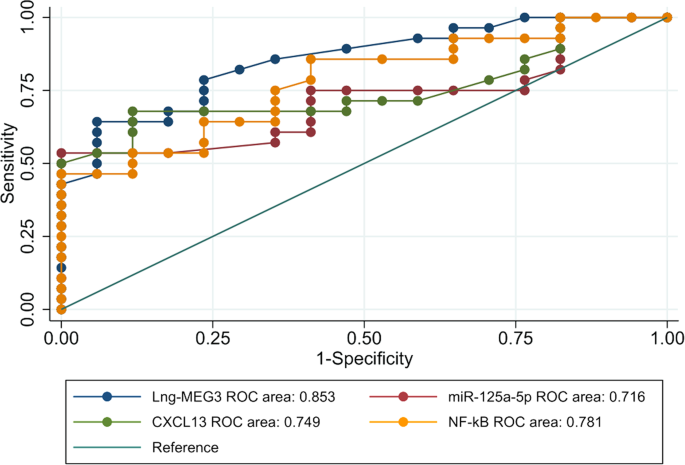

Long non-coding RNA maternally expressed gene 3, miR-125a-5p, CXCL13, and NF-kB in patients with immune thrombocytopenia
The main aim of this study was to assess the expression level of circulating long non-coding RNA maternally expressed gene 3 (lncRNA-MEG3), microRNA (miR-125a-5P), the chemokine C-X-C motif ligand13 (CXCL13), and the nuclear factor kappa-light-chain-enhancer of activated B cells (NF-kB) in immune thrombocytopenia (ITP) cases and to study its relation to the disease severity and treatment response. This case-control study included 45 patients newly diagnosed as ITP and 45 healthy subjects. We assessed complete blood count, antinuclear antibodies, hepatitis B and C virus serology, lncRNA-MEG3, miR-125a-5P, and CXCL13 expression in serum by real-time PCR and NF-kb protein by ELISA. In ITP patients compared to control, lncRNA-MEG3 was significantly increased, and miRNA-125a-5P was decreased, and this was associated with higher CXCL13 and NF-kB levels (P < 0.001, for all).There was a significant negative correlation between platelet count and lncRNA-MEG3, CXCL13, and NF-kb, while a positive correlation with miR-125a-5p in ITP patients. Patients who responded to steroids had significantly higher miR-125a-5p (P = 0.016) and significantly lower lncRNA-MEG3 (P < 0.001), CXCL13 (P = 0.005), and NF-kb (p = 0.002). Based on the ROC curves, lncRNA-MEG3 displayed the highest area under the curve (AUC) in the identification of organ bleeding (AUC = 0.805), the response to steroids (AUC = 0.853), and the need for splenectomy (AUC = 0.75).